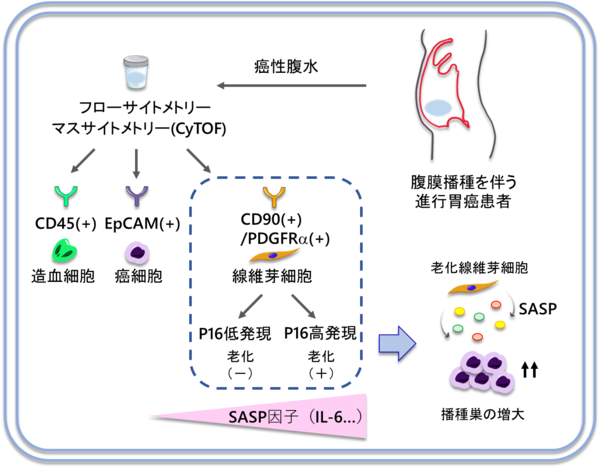- HOME
- News & Events
- Books / review / comments
- 【Books/review/comments】Detection of senescent cells in malignant ascites using mass cytometry and th...
Books / review / comments
【Books/review/comments】Detection of senescent cells in malignant ascites using mass cytometry and therapeutic strategies focused on cellular senescence
July 15 2022
Labs: Takatsugu Ishimoto
Takatsugu Ishimoto
Paper information
Title:
Detection of senescent cells in malignant ascites using mass cytometry and therapeutic strategies focused on cellular senescence
「マスサイトメトリーを用いた癌性腹水中老化細胞の検出と細胞老化に着目した治療戦略」
Yasuda T, Ishimoto T*. (*corresponding authors)
Cytometry Research 2022 Volume 32 Issue 1 Pages 27-32 doi: https://doi.org/10.18947/cytometryresearch.32.1_27
Abstract:
Recent studies have revealed senescent non-malignant cells in the tumor microenvironment exhibit a secretory profile under stress conditions; this senescence-associated secretory phenotype (SASP) promotes carcinogenesis and cancer progression. However, the role of senescent non-malignant cells in the metastatic process is not well-understood. We showed that fibroblast population shows p16 expression and SASP factors at high levels in the ascites of gastric cancer patients with peritoneal dissemination by single-cell mass cytometry (CyTOF). Moreover, we present the senolysis strategy in the tumor microenvironment based on the results of an in vivo validation. We identified piperlongumine as the effective senolytic drug for senescent-fibroblasts. These findings offer some notice toward a successful treatment targeting harmful senescent cells and provide the potential for clinical application for the future therapeutic strategy for combining conventional chemotherapy.
Representative Figure

